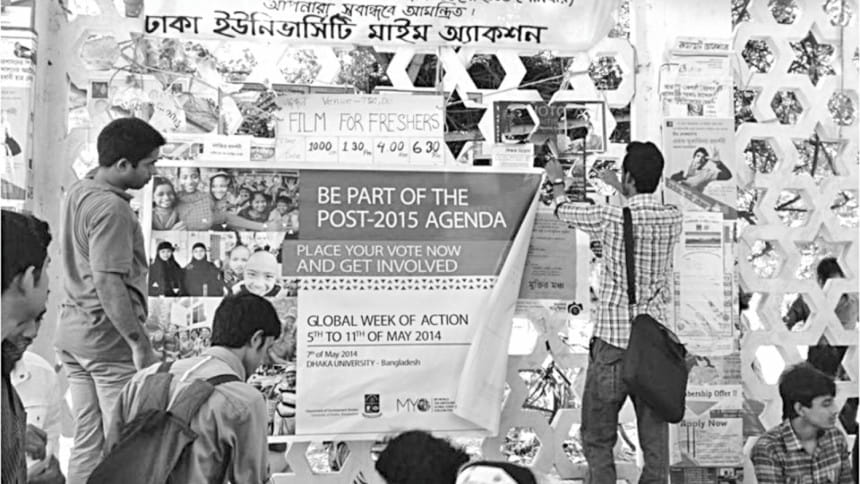SDGs reaffirm support to Cairo mandate

Integrating population dynamics and sexual and reproductive health into development strategies was the main goal at the International Conference on Population and Development (ICPD) that took place 21 years ago in Cairo, Egypt. On the eve of another decisive declaration expected to be adopted by the Member States of the United Nations in just a few days we take a look at how much of the ICPD agenda has been integrated into the outcome document "Transforming Our World: The 2030 Agenda for Sustainable Development", which will take over from the Millennium Declaration and Millennium Development Goals (MDGs).
The UN Summit for the Member States to adopt the Post-2015 Development Agenda will take place from the 25th to the 27th of September this year. This UN Sustainable Development Summit 2015 will mark the culmination of an almost three-year long process of consultations and negotiations, which have involved a variety of individuals, groups, organizations and governments. In comparison to the development of the MDGs, the process to get to this stage of having 17 Sustainable Development Goals (SDGs) with 169 targets has been much more inclusive and participatory. The preamble of the current version of the Outcome Document calls it a universal agenda for action with a focus on “people, prosperity and planet” and a call to promote peaceful societies and establish global partnerships for implementation. The document directly seeks to build on the MDGs and close the gaps that remain. Realizing human rights and gender equality are guiding principles for the achievement of the SDGs which are based on a balance between the social, economic and environmental dimensions of development.
| Target 3.7 refers to “ensuring universal access to sexual and reproductive health-care services, including for family planning, information and education”, and Target 5.6 also specifically speaks of ensuring “universal access to sexual and reproductive health and reproductive rights as agreed in accordance with the Programme of Action of the International Conference on Population and Development” |
When examining the outcome document and its goals and targets, the close link to many ICPD-related issues becomes apparent. The SDGs contain goals directly related to health and gender and a number of targets that speak to key ICPD issues.
Last September, during the UN General Assembly Special Session on the Follow-up to the ICPD beyond 2014 that marked the 20th anniversary from the Cairo Conference, UN Member States reconfirmed that the ICPD agenda and the Programme of Action remained as important as ever and positioned ICPD issues as central to the SDGs. “We cannot talk about sustainable development without addressing women's empowerment, gender inequality, and discrimination and violence and ensuring sexual and reproductive health and rights of all are met”, UNFPA Executive Director Babatunde Osotimehin said in the Special Session. These issues, he said, “must be at the heart of the Post-2015 agenda to ensure that current and future generations are made up of resilient, adaptive, innovative, creative people capable of building resilient societies”.
Gender equality and the empowerment of women and girls, as well as increased investments to close the gender gap, have found a central place in the SDGs. Universal health coverage and universal access to SRH information, education and services are underscored in the Post-2015 goals, just as the need for quality, accessible, timely and reliable disaggregated data to measure progress. The inclusion of so many important ICPD related issues is not a coincidence; in fact, the ICPD Beyond 2014 review and the Framework for Actions for the follow up to the ICPD beyond 2014 last year already provided critical evidence to justify inclusion of the link between population dynamics and development.
Our lessons from Bangladesh can serve as an example of how important access to sexual and reproductive health is, especially for adolescents and youth. If girls, boys and their families are more aware of the physical risks of teenage pregnancies they may decide to delay the first pregnancy to ensure that both mother and baby survive and lead healthy lives. This is the reason why sexual and reproductive health and reproductive rights, the empowerment of women and gender equality, and the rights and empowerment of adolescents and youth, are at the heart of the Post-2015 Sustainable Development Goals, as have been in the ICPD agenda.

 For all latest news, follow The Daily Star's Google News channel.
For all latest news, follow The Daily Star's Google News channel. 



Comments